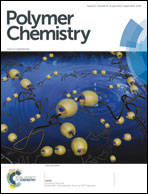In situ forming biodegradable electroactive hydrogels
Abstract
Electroactive injectable degradable hydrogels have great potential as bioactive scaffolds for tissue regeneration. We present the development of a series of in situ forming biodegradable electroactive hydrogels which were synthesized by in situ crosslinking of gelatin-graft-polyaniline (GP) by genipin at body temperature. The chemical structure and electroactivity of the GP co-polymers was confirmed. The formation of in situ hydrogels was demonstrated by the test tube inversion method and rheology measurement. Gelation time, swelling ratio and degradation rate of the hydrogels were controlled by the polyaniline content and genipin content. The conductivity of the hydrogels in the swollen state increased with increasing the polyaniline content in the materials. Interestingly, the hydrogels exhibited a linear release profile of in situ encapsulated diclofenac sodium. The non-cytotoxicity of the hydrogels was confirmed via cell adhesion and proliferation by using bone marrow mesenchymal stem cells and rat C2C12 myoblast cells. These in situ formed degradable electroactive hydrogels represent a new class of biomaterials and as biomimetic scaffolds they have great potential for sophisticated tissue engineering, such as bone, muscle and neural regeneration.


 Please wait while we load your content...
Please wait while we load your content...